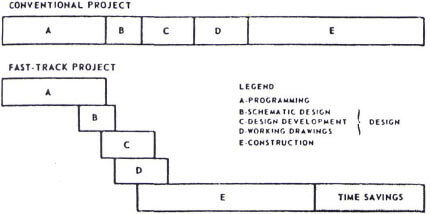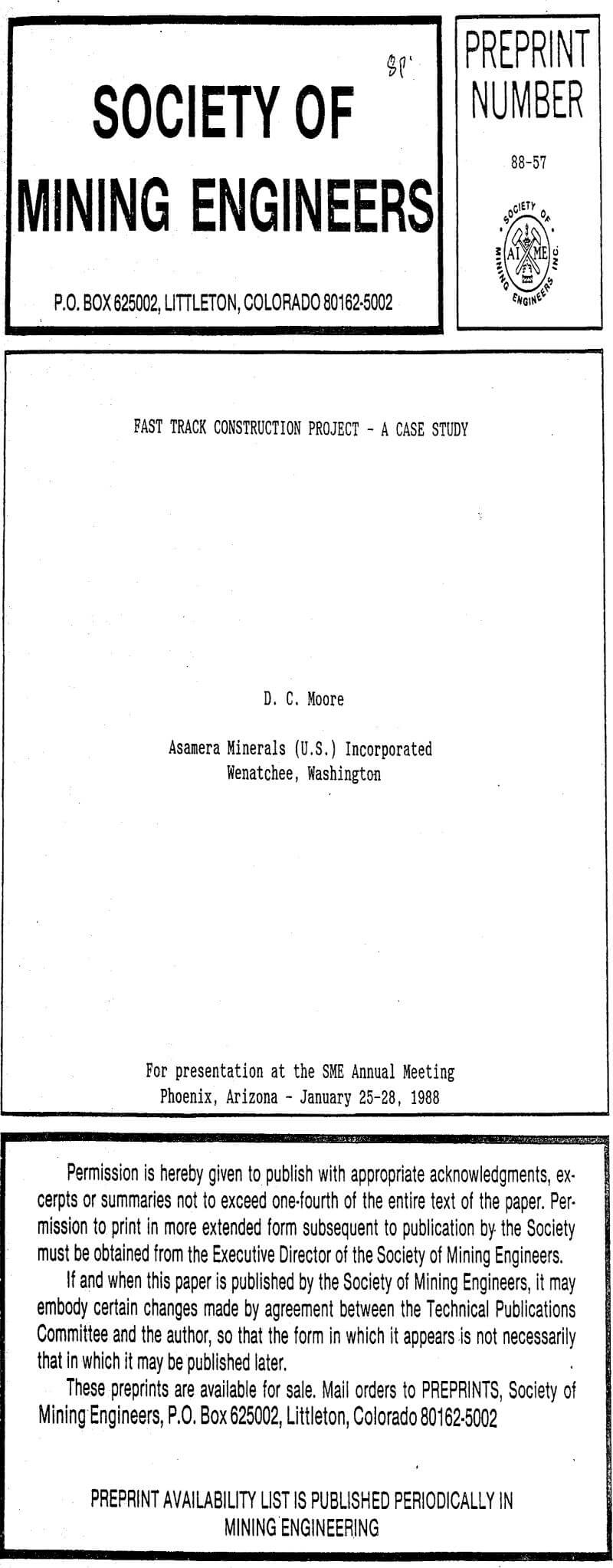The construction schedule is a very important part of any complex construction project. If used properly it can alert the construction manager to a variety of problems including ability to complete the project on schedule, overtime construction required to keep on schedule, increase in construction personnel, impact of late equipment arrival, impact of detail engineering delays, and other potential problems.
The construction manager should be intimately aware of the schedule and include it in all weekly discussions with the contractor. Variances in schedule dates should be noted. If there is an impact on the completion date either an alternative should be formulated or management informed of the delay.
When delays of final construction completion are anticipated there are generally some means to bring the completion back on schedule at an additional cost. Decisions concerning cost of ameliorating delays should be made by the overall project management because other areas of the project may be delayed also. It usually is not practical to keep one part of a construction project on schedule by paying extra for timely completion when another part of the project cannot be completed on time.
The project consisted of three main projects: underground mine development, concentrator construction, and earth works and tailings dam construction. Because of delays in the earth works construction project there was no reason to pay overtime or hire extra personnel to finish the concentrator on the original completion date. Therefore the concentrator construction schedule was extended so that the completion date was nominally before the revised tailings dam construction completion date.
Due to delays in receiving the revised tailings dam construction schedule from the contractor, the contractor was not aware of the overall impact of the delays on the project start up date. This eventually led to a legal argument between parties and a substantial accelerated completion bonus paid to the contractor.
The absence of a realistic construction schedule was therefore a detriment to the overall project schedule and cost.
Fast track construction of mineral process sing plants is economically possible. However problems associated with the project can quickly escalate and cause major schedule delays and cost overruns. Prior paragraphs detail some of these problems and remedies. The following conclusions are from this information.
- Select the process flowsheet as soon as possible. Stick with this flowsheet unless continuing development work conclusively shows another process is preferable.
- The process engineer must be able to accurately size equipment or have it done with outside personnel.
- Process options must be presented to the project management complete with costs and construction schedule changes so that an informed decision can be made.
- Use process design personnel who are familiar with development procedures. Consultants and contract research companies should be used if there are no personnel in the company to perform these tasks.
- Equipment selection will substantially influence the overall project. New equipment is more reliable but generally requires a longer procurement time and higher cost.
- Used equipment may be found that will adequately handle the job. However hidden defects, too large equipment size and harder to obtain spare parts may offset the advantage over new equipment.
- Used equipment procurement in a fast track construction schedule requires a routine purchase approval network. Someone familiar with used equipment procurement should be made responsible for selection, negotiation and transportation of the equipment.
- Hire the process engineer for the project as soon as possible.
- Hire a construction manager with prior construction experience. The construction manager and process engineer may or may not be the same person.
- Begin hiring process operating and maintenance supervisory staff early. These personnel can be used as construction monitors and to develop training manuals and spare parts inventories.
- A cost control engineer should be hired and made responsible for tracking construction costs and schedules.
- A realistic construction schedule provided by the construction contractor can be used advantageously to monitor the schedule and influence the project cost. The schedule should become part of the construction contract and routinely reviewed.
- Environmental and building permits can easily become a major hindrance in meeting construction start and end dates. Process considerations can also be impacted by the various permits. Therefore assign the development of the permit documentation to someone familiar with their requirements.
Consideration of the above ideas will help the prospective construction manager develop his staff and procedures for a successful project.

